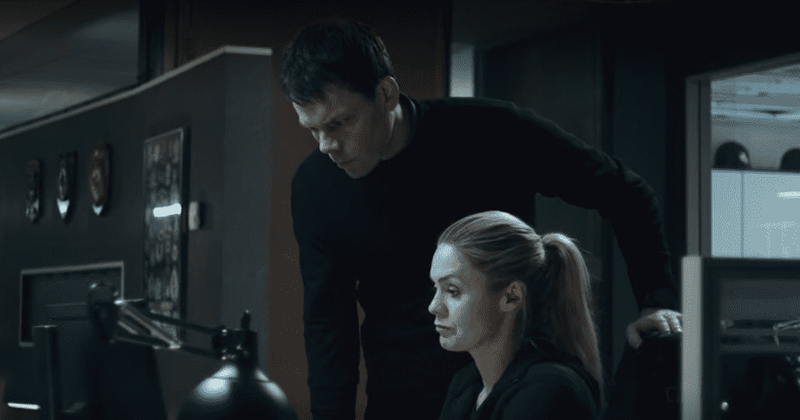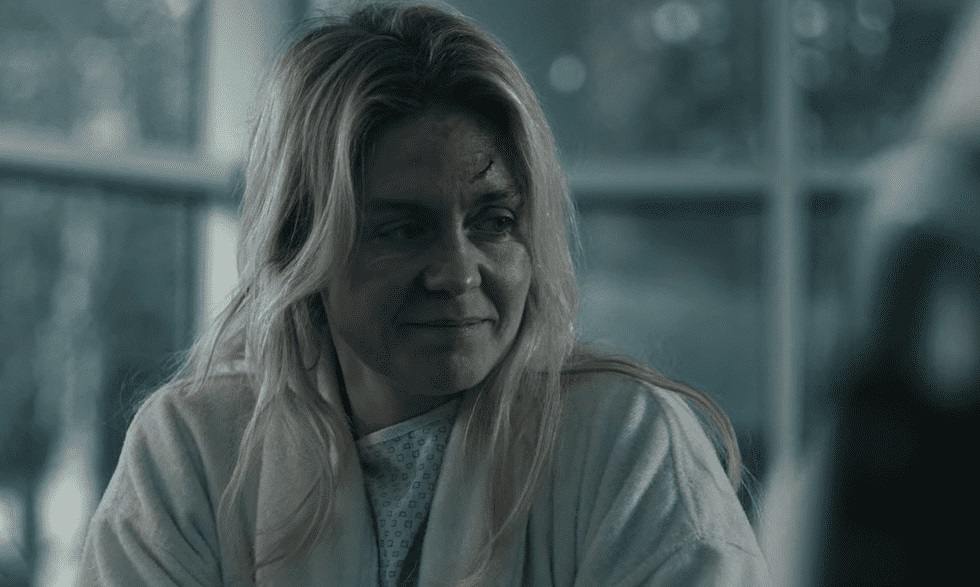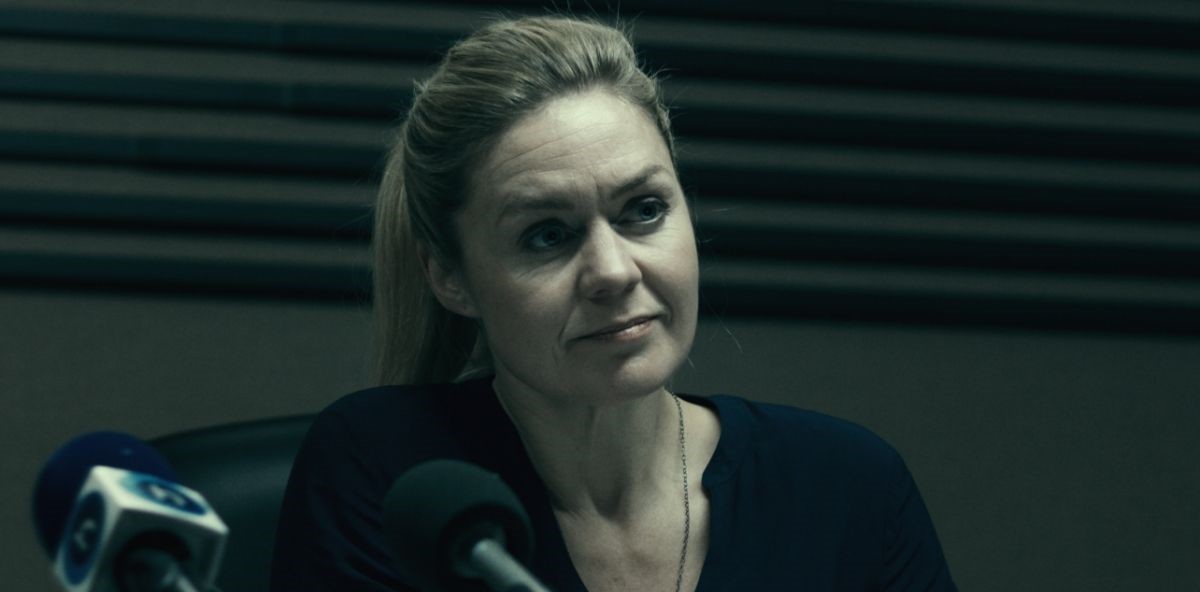Netflix makes a powerful debut in Iceland with ‘The Valhalla Murders‘, a gripping whodunit that centers around the country’s first serial killings. The series is the brainchild of Thordur Palsson, and was inspired by a real-life case that took place decades ago. It is co-written by Margrét Örnólfsdóttir, Otto Geir Borg, Mikael Torfason, along with crime author, Óttar M. Norðfjörð. ‘The Valhalla Murders’ shines in its subtlety and smartness, as it throws its audience in different directions with each episode. The series, then, smoothly ties up all these twists with the big reveal in the finale. SPOILERS ALERT!
The Valhalla Murders Plot

The series follows Officer Kata, who is in charge of a gruesome murder that took place at Reykjavik harbor. The victim is an old man who was brutally stabbed and had his eyes cut off. This is followed by a similar murder of another old man. Soon Kata realizes that there might just be Iceland’s first serial killer on the loose. She is then paired up with police profiler Arnar, who is sent from Oslo to assist in the case.
The duo digs deeper as more murders take place, all of which connect the victims to Valhalla, a state-run institution for boys that has a horrifying past. It turns out that the murder victims were all staff members at the institution who abused the boys who lived there. Further investigation ties the current killings to a 30-year-old cold case of a young boy’s death. The survivors of the abuse reveal regularly being raped by an unknown man.
Eventually, the serial killer is revealed to be the father of the young boy. But when Arnar and Kata learn about odd inconsistencies in one of the murders, they reopen the case. This takes them on a dangerous path filled with terrifying revelations all of which point towards men they know and trust. The ending then reveals the whole truth behind Valhalla and the actual monster in the dark.
Valhalla in Norse Mythology
‘The Valhalla Murders’ respects its audience’s intelligence with its own as it hints at and foreshadows certain crucial twists through elements from Norse mythology. The origin of the word “Valhalla” makes this clear. In Old Norse, Valhalla refers to the “hall of the fallen” where the Norse god, Odin, housed the dead, particularly those who were slaughtered in battle.
Odin was the god of war, battle, and death, and Valhalla was a glorious hall where noble-dead warriors resided. This, in a way, connects to the state-run institution for the boys who were dealing with past trauma, for whom Valhalla was meant to be a safe home. But it is also important to note that Odin housed the warriors to fulfill his selfish purpose. Interestingly, despite being the chief of God, Odin is a controversial figure in Norse mythology due to his selfishness and even being considered evil.
It may be far-stretched, but Petur in ‘The Valhalla Murders’ becomes an Odin-like figure due to his power and intentions. It is also revealed that Petur was the one who owned Valhalla, and had complete control over it. He housed the young boys to sexually abuse them and eventually killed Tommi.
Interestingly, in Norse mythology, Odin is also Thor’s father. This could, in a way, connect to the role Thor plays in the series. Odin was also the one behind the notorious “Wild Hunt” where it is believed he assumed dark and dreadful powers, and hunted humans…which sounds similar to serial killings, doesn’t it?
Valkyrie and Fannar’s Death
“Valhalla” comes from the word “Valr” which has cognates in other Germanic languages where it means slaughter, blood bath, and even murder. This, of course, connects Valhalla to being the slaughterhouse that Kata says it is. Interestingly the word “Valr” is also related to Valkyrie. If the name sounds familiar, it because it is the name of the game Fannar plays in the series.
Interestingly in Norse Mythology, Valkyries were “the choosers of the slain”. They were considered to be the female spirits of carnage – which again connects to the serial killings. Valkyries were the ones who decided who went to Valhalla. But they also chose who died in the war by using malicious magic. This becomes relevant when we look at the video-game played by Fannar, who is also a victim of sexual child abuse.
In Arnar’s last interaction with Fannar, Arnar asks him how he is doing in Valkyrie. To this, Fannar responds by saying, “Bad, I keep dying” which foreshadows his suicide in the next episode. While some of the theories I mentioned may be far-fetched, there is undoubtedly a connection between Valhalla and Valkyrie which becomes more apparent than ever with Fannar’s death.
Ending: The Truth Behind Valhalla

‘The Valhalla Murders’ is a clever whodunit that steadily weaves a complex web, throwing you in different directions, only to eventually tightly tie all the loose ends. After the Valhalla case is wrapped up, Arnar learns about inconsistencies in Gummi’s murder after Hugrun points out some strange details. He and Kata then decide to reopen the case. Another officer, Hakon, from Borgarnes, finds out a hidden room in Valhalla and contacts Kata.
When Hakon and Kata investigate inside the room, they realize that it is the site of Tommi’s murder. The unknown man who raped the young boys also killed Tommi. After talking to a witness from a nearby farm, the two realize issues with the 30-year-old police report. On tracking down the officer who apparently wrote it, they realize that it was Magnus who falsified the report. On further investigation, more evidence seems to point towards Magnus being responsible for Tommi’s disappearance.
After a failed attempt at getting the authority to investigate Magnus who is the police commissioner, Kata decides to take things into her own hands and leaks the information to Selma. Selma, in turn, confronts Magnus with all the evidence against on a live interview. Arnar, who we learn is Magnus’s foster child, also begins to believe that the police commissioner was responsible for the child abuse in Valhalla.
Arnar realizes that each one of the Valhalla boys has a scar on their arm. When Fannar commits suicide, he sees a similar mark on his arm as well. Digging deeper, he realizes Ragnar, too, has a similar scar, and he decides to meet him. As he talks to Ragnar about a childhood fishing trip and looks at old photographs, Arnar soon realizes that the man who raped all those boys, including Ragnar and Fannar, was Petur, the state attorney. Magnus only helped Petur cover-up Tommi’s disappearance and falsified the report.
Kata, who is unaware of this information, goes to Petur for his help in conducting an investigation on Magnus. Petur then drugs Kata, marks her arm with his knife, like he did with all the boys, and holds her hostage inside his boat. Arnar informs the police and goes to look for Kata at the port. This is followed by a dangerous fight, where Petur almost kills the two. Just when he is about to murder Kata, Arnar pushes him into the sea, falling with him. Kata then jumps in and save Arnar. The two survive, despite their injuries. But the final shot reveals that Petur was never found and could still be on the run. This sets up the finale of ‘The Valhalla Murders’ for a second season.
Read More: The Real-Life Horrors That Inspired ‘The Valhalla Murders’


You must be logged in to post a comment.